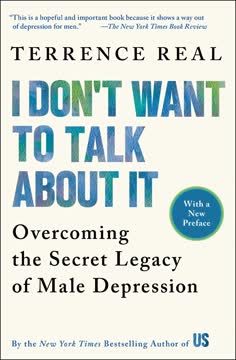Key Takeaways
1. Ditch chronic cardio and embrace aerobic training
Chronic cardio can cause permanent damage to the heart by promoting chronic inflammation, and scarring/hardening of the arteries from repeated micro tears.
Redefine endurance training. The conventional approach to endurance training, characterized by frequent moderate-to-difficult intensity workouts with insufficient rest, is deeply flawed. This "chronic cardio" pattern can lead to burnout, excess body fat, and increased health risks.
Embrace aerobic training. Instead, focus on building aerobic capacity through comfortably paced workouts at or below your maximum aerobic heart rate. This approach, pioneered by Dr. Phil Maffetone, involves:
- Calculating your maximum aerobic heart rate: 180 - age
- Conducting the majority of workouts below this heart rate
- Avoiding the "black hole" of training just above aerobic maximum
- Gradually increasing speed at the same heart rate as fitness improves
By prioritizing aerobic development, you'll become more efficient at burning fat, improve endurance performance, and protect your health. This method has been proven effective by elite athletes across various endurance sports for over 50 years.
2. Balance stress and rest through intuitive training
The ideal training pattern is fractal, flexible, subject to change on the fly, and ultimately your responsibility.
Embrace periodization. Reject the notion of consistency in training and instead adopt a periodized approach that balances stress and rest. This involves:
- Starting each season with an aerobic base period (minimum 8 weeks)
- Introducing brief periods of high-intensity training (max 4 weeks)
- Following intensity periods with rest and aerobic rebuilding
- Observing an extended rest period at the end of each season
Listen to your body. Align workout difficulty with your daily levels of energy, motivation, and health. Use a 1-10 scale to assess these factors and match your training intensity accordingly. This intuitive approach allows for higher highs (breakthrough workouts) and lower lows (more rest), leading to better performance and reduced risk of burnout.
3. Adopt a primal eating strategy to become fat-adapted
Eating primally enables you to escape carbohydrate dependency and become a fat-burning beast!
Ditch processed foods. The first step in adopting a primal eating strategy is to eliminate the most offensive foods in the modern diet:
- Sugars and grains (which promote carbohydrate dependency and fat storage)
- Highly refined polyunsaturated vegetable oils (which cause oxidative damage)
Embrace primal foods. Instead, focus on nutrient-dense, satisfying foods that fueled human evolution:
- Meat, fish, fowl, eggs
- Vegetables and fruits
- Nuts and seeds
- Highly nutritious supplemental carbs (sweet potatoes, wild rice, quinoa)
This approach helps you become fat-adapted, allowing for easier fat loss, improved endurance performance, and reduced inflammation. Use the Primal Blueprint Carbohydrate Curve to guide your carb intake based on your body composition goals and activity level.
4. Explore ketogenic endurance training for peak performance
When you become keto- and fat-adapted, you are virtually bonk-proof.
Understand ketosis. Ketogenic endurance training involves strictly limiting carbohydrate intake (around 50 grams per day) to enter a state of ketosis. In this state, your body produces ketones, which can be used as an efficient fuel source by the brain and muscles.
Benefits for endurance athletes:
- Improved fat oxidation rates (up to 1.8 grams of fat per minute)
- Ability to perform for hours with minimal external fuel
- Reduced inflammation and oxidative stress
- Potential for significant performance breakthroughs
While ketogenic training requires careful implementation and may not be suitable for everyone, it represents a cutting-edge strategy for endurance performance. Even if you don't fully commit to a ketogenic approach, becoming more fat-adapted can still provide significant benefits.
5. Incorporate strength training for power and resilience
Strength training allows you to connect the dots and identify weaknesses that can cause your form to break down during an endurance workout.
Focus on explosive power. Endurance athletes should prioritize brief, high-intensity strength workouts that develop raw strength and explosiveness. This approach differs from traditional "blended" workouts that attempt to combine cardiovascular and strength training.
Two effective approaches:
- Primal Essential Movements (PEM): Simple, effective exercises like pushups, pullups, squats, and planks that can be done regularly with minimal equipment.
- Maximum Sustained Power (MSP) training: Involves lifting heavy weights for few reps with ample rest, focusing on functional movements like deadlifts and squats.
Benefits of strength training for endurance athletes:
- Improved ability to resist fatigue and maintain proper form
- Enhanced power output and muscular efficiency
- Increased bone density and connective tissue strength
- Hormonal benefits that promote recovery and delay aging
6. Harness the benefits of sprinting for endurance athletes
Nothing cuts you up like sprinting!
Integrate sprinting carefully. While it may seem counterintuitive, occasional short-duration sprint workouts can provide significant benefits for endurance athletes:
- Improved cardiovascular function and oxygen utilization
- Enhanced fat metabolism and body composition
- Increased resilience to physical and psychological fatigue
- Strengthened muscles, joints, and connective tissue
Guidelines for effective sprinting:
- Perform sprints only during high-intensity training periods
- Ensure proper warmup and cooldown
- Focus on consistent quality efforts (10-30 seconds duration)
- Allow for sufficient rest between sprints (30-60 seconds)
- End the workout when performance declines significantly
Remember that sprinting is a powerful stimulus, so it should be used judiciously and balanced with adequate recovery.
7. Prioritize sleep and complementary lifestyle practices
Sleep is the top priority for your fitness progress and preservation of health.
Optimize sleep habits. Quality sleep is crucial for recovery, hormonal balance, and overall health. Key strategies include:
- Minimizing artificial light and digital stimulation after dark
- Creating a cool, dark, and quiet sleeping environment
- Maintaining consistent bedtimes aligned with circadian rhythms
- Considering afternoon naps for additional recovery benefits
Incorporate complementary practices:
- Increase general everyday movement to combat sedentary lifestyle effects
- Engage in mobility and movement practices like yoga or Pilates
- Prioritize play and unstructured physical activity for mental refreshment
- Pursue well-managed "primal thrills" for occasional adrenaline rushes
By attending to these often-overlooked aspects of lifestyle, you'll create a solid foundation for endurance performance and overall well-being.
Last updated:
FAQ
What's Primal Endurance about?
- Endurance Training Focus: Primal Endurance by Mark Sisson and Brad Kearns advocates for a shift from traditional endurance training methods to a fat-burning approach, reducing reliance on carbohydrates.
- Holistic Approach: The book integrates training, nutrition, and lifestyle practices, emphasizing the importance of balancing stress and rest for optimal performance and health.
- Dietary Changes: It promotes a primal eating strategy, eliminating sugars, grains, and industrial oils, focusing on nutrient-dense foods to improve health and athletic performance.
Why should I read Primal Endurance?
- Performance Enhancement: Offers practical strategies for endurance athletes to overcome performance plateaus and excess body fat by becoming a "fat-burning beast."
- Health Benefits: Addresses the health risks of chronic cardio and high-carb diets, providing a healthier alternative for improved well-being and longevity.
- Success Stories: Includes testimonials from athletes who have successfully implemented the primal approach, providing motivation and proof of its effectiveness.
What are the key takeaways of Primal Endurance?
- Slow Down Training: Emphasizes building an aerobic base by slowing down workouts, improving fat-burning efficiency and endurance.
- Balance Stress and Rest: Highlights the need for a balanced training schedule with adequate rest to avoid burnout and injuries.
- Primal Eating Strategy: Advocates for a diet free of sugars, grains, and industrial oils, focusing on nutrient-dense foods for optimal performance and health.
How does Primal Endurance define chronic cardio?
- Definition: Chronic cardio involves too many moderate-to-difficult-intensity workouts with insufficient rest, leading to burnout and health issues.
- Health Risks: Warns that chronic cardio can cause permanent heart damage and promote chronic inflammation.
- Aerobic Training Shift: Advocates for a focus on aerobic training to improve fat metabolism and endurance without health risks.
What is the Maximum Aerobic Function (MAF) test in Primal Endurance?
- Purpose: Designed to measure improvements in aerobic capacity, allowing athletes to track their progress.
- Conducting the Test: Involves running a fixed course at maximum aerobic heart rate (180 - age) and recording the time.
- Significance: Improvement indicates better fat-burning efficiency; regression suggests overtraining or stress.
What is the Primal Blueprint eating strategy in Primal Endurance?
- Eliminate Processed Foods: Involves ditching sugars, grains, and industrial oils to reduce inflammation and insulin production.
- Focus on Nutrient-Dense Foods: Emphasizes whole foods like meat, fish, eggs, vegetables, fruits, nuts, and seeds for recovery and performance.
- Personalized Approach: Flexible and customizable based on individual preferences, making it sustainable long-term.
How does Primal Endurance address nutrition for endurance athletes?
- Primal-Aligned Diet: Advocates for a diet rich in healthy fats, lean proteins, and non-starchy vegetables to improve endurance and health.
- Carbohydrate Cycling: Suggests strategic carbohydrate intake around high-intensity workouts while maintaining a low-carb diet during regular training.
- Avoid Processed Foods: Warns against processed foods and sugars, emphasizing whole, nutrient-dense foods for optimal performance and recovery.
What specific methods does Primal Endurance recommend for training?
- Maximum Aerobic Function (MAF): Training at a heart rate that allows for optimal fat burning, building a strong aerobic base.
- Maximum Sustained Power (MSP): Involves lifting heavy weights in mini-sets with ample rest to improve explosive power and endurance.
- Sprint Workouts: Encourages short, high-intensity sprints to boost fitness and performance, done when fully rested.
How can I escape carbohydrate dependency according to Primal Endurance?
- Eliminate Sugars and Grains: Ditch sugars, grains, and industrial oils to reduce insulin production and promote fat burning.
- Focus on Primal Foods: Emphasize nutrient-dense foods like meat, fish, eggs, vegetables, and nuts to stabilize appetite and energy levels.
- 21-Day Transition: Commit to a strict 21-day period to reprogram genes and avoid the addictive properties of sugar and grains.
What is the ketogenic endurance training approach in Primal Endurance?
- Definition: Involves restricting carbohydrate intake to around fifty grams per day, encouraging the body to burn fat and ketones for fuel.
- Benefits: Athletes become "bonk-proof," able to perform for extended periods without relying on external carbohydrate sources.
- Transitioning: Suggests becoming fat-adapted before attempting a ketogenic approach for a successful shift.
What role does recovery play in Primal Endurance?
- Importance of Sleep: Adequate sleep is crucial for recovery, regulating hormones, repairing muscles, and enhancing cognitive function.
- Active Recovery: Encourages light activities like walking or yoga on recovery days to promote blood flow and muscle repair.
- Cold Therapy and Compression: Discusses benefits for reducing muscle soreness and enhancing recovery, helping athletes feel refreshed.
What are the best quotes from Primal Endurance and what do they mean?
- "Slow down and emphasize aerobic workouts.": Advocates for a shift from high-intensity training to building an aerobic base for better endurance and health.
- "Balance between stress and rest.": Emphasizes recovery's importance in training, warning against overtraining and its health risks.
- "Ditch sugars, grains, and industrial oils.": Calls for dietary improvements crucial for optimizing performance and health, underscoring nutrition's role in endurance training.
Review Summary
Primal Endurance receives mixed reviews, with an average rating of 4.03/5. Readers appreciate its insights on low heart rate training, primal nutrition, and balanced approach to endurance sports. Many find it helpful for injury prevention and overall health improvement. However, some criticize its repetitiveness and length, suggesting it could be condensed. The book's focus on lifestyle changes, including diet and recovery, resonates with many readers. While some find the concepts revolutionary, others note that the information can be overwhelming and not beginner-friendly.
Similar Books










Download PDF
Download EPUB
.epub digital book format is ideal for reading ebooks on phones, tablets, and e-readers.








